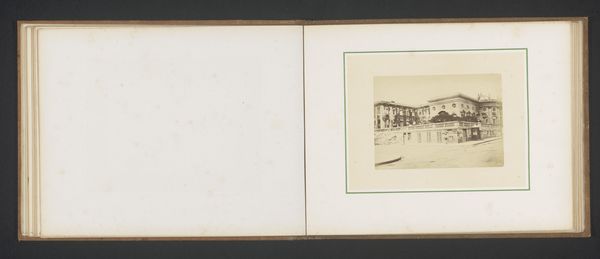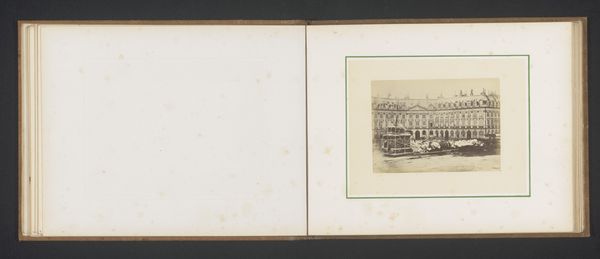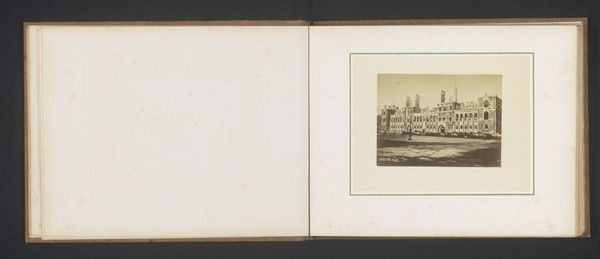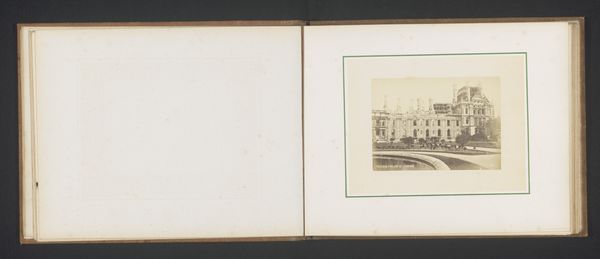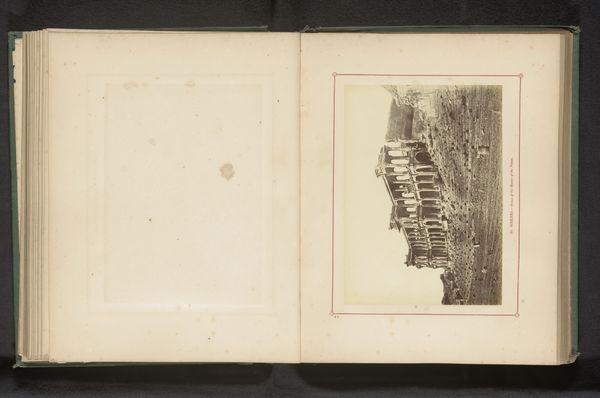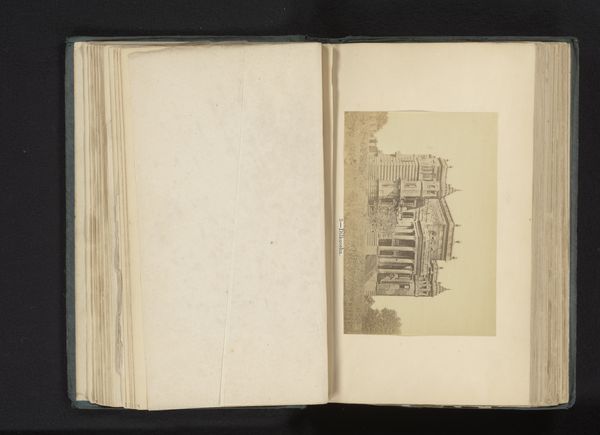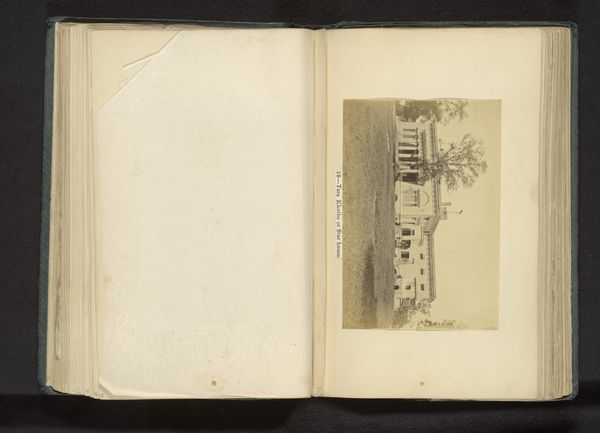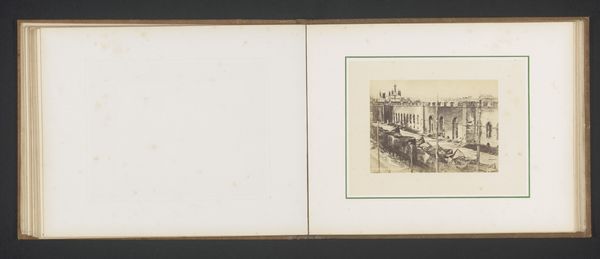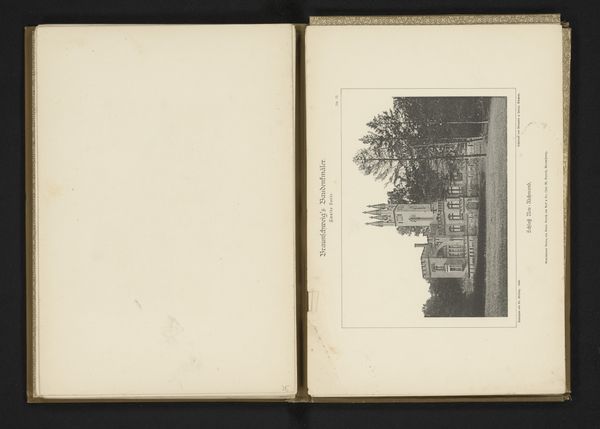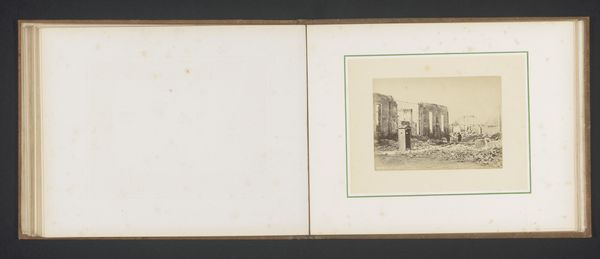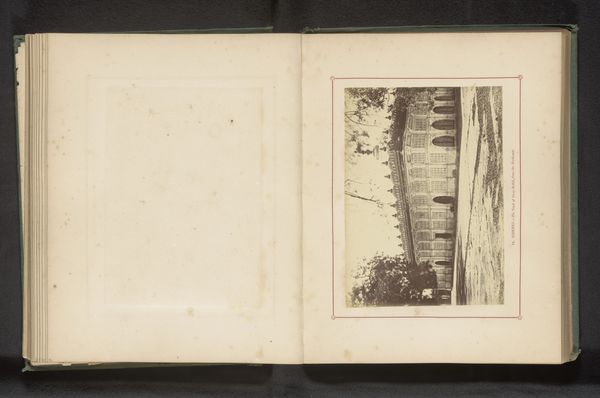
Dimensions: height 93 mm, width 129 mm
Copyright: Rijks Museum: Open Domain
Curator: The desaturated tones create a muted atmosphere; the linear progression of columns, and then arches and domes are appealing, giving rhythm to the urban scene. Editor: This is a photograph by P. Loubère, titled "View of the Palais-Royal in Paris after the fire by the Paris Commune", taken in 1871. The choice of the photographic medium itself is telling, acting as documentary evidence of destruction and reflecting the Commune's impact on the urban landscape. Curator: The symmetry and order are strongly established, yet the smoke damage depicted is jarring and disrupts that formalism; do you find it successful as a social statement? Editor: Absolutely, and I'd suggest that even the way the photograph has been produced is integral to understanding its value. Photography was rapidly developing and gaining relevance in the media; the creation and widespread circulation of images like these would certainly shape public perception and influence social attitudes regarding the Commune. This goes to say how the means of art-making is just as crucial as the formalistic expression of its time. Curator: An interesting perspective. Although the tonal palette is not expansive, and we are limited to browns, sepias, creams and some charcoals, these muted tones convey more effectively the gloom and sorrow pervading a space so recently violated. The artist has harnessed a somber sensibility out of these earthy pigments and translated them skillfully on to the printed picture. Editor: The damage seen in the photograph reminds us about the very real social conflicts and physical violence suffered during the Commune; the destruction that reshaped everyday experiences, leaving behind stark memories within Parisian communities and its urban environment. Curator: Looking at the proportional relationships carefully, one observes the verticality that has been maintained through pillars, doors, windows and domes to deliver depth and spaciousness, while balancing horizontal arches to ground this ruined urban scape. This has resulted in an exquisite depiction. Editor: Considering all we have observed together, it becomes evident that this is not simply an aesthetic portrayal of urban destruction. Loubère invites us to reflect on how deeply political and social instability affect not only people, but the cultural landscape that they inhabit. Curator: It's been insightful seeing your reading about it. Thanks for enriching my interpretation as well.
Comments
No comments
Be the first to comment and join the conversation on the ultimate creative platform.
